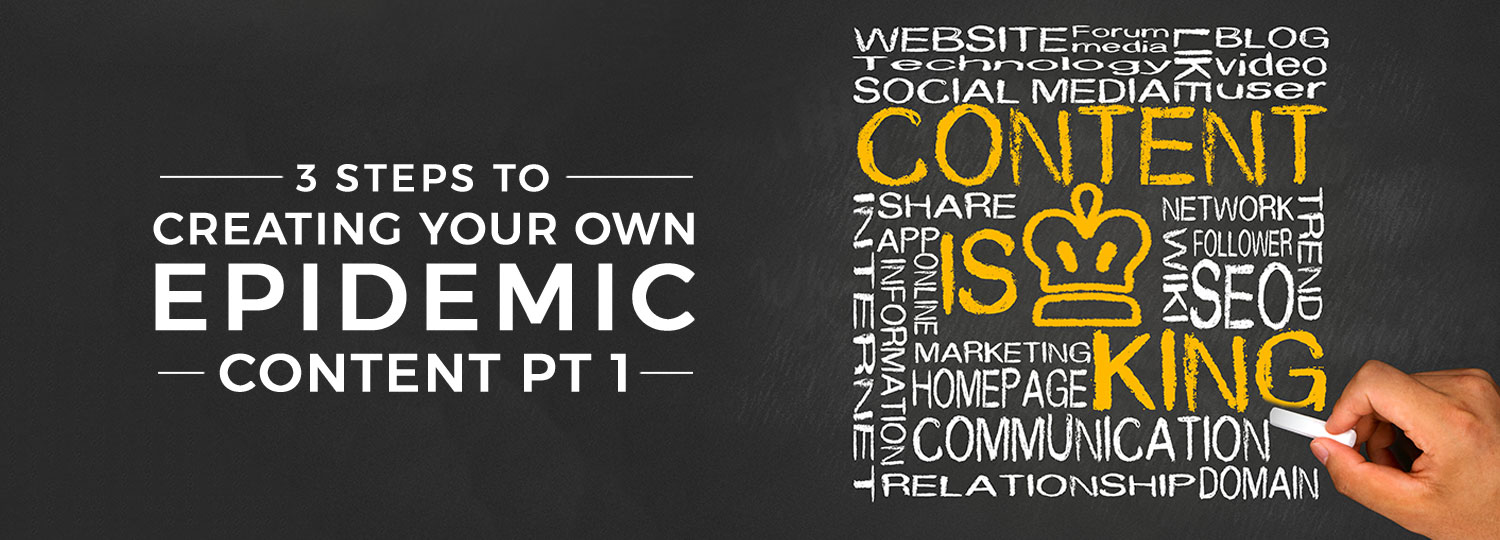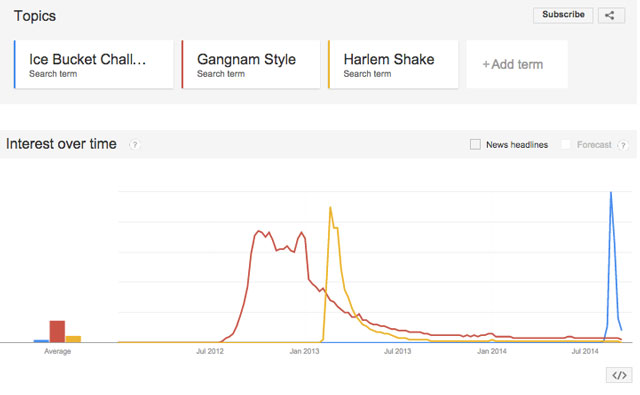
What does Korean hit song Gangnam Style, the Harlem Shake, the ALS Ice Bucket Challenge and countless cats and babies have in common?

Well, you hit the nail on the head. The whole world loves them, and they’ve all once been the subject of content that went viral and took over the World Wide Web.
They were so contagious they managed to strike down millions (if not billions) of cyber people who then felt compelled to watch, read, comment and/or share the source of their infection, causing it to spread, unchecked, to more and more of the civilised world.
But what is the secret to their success, and how can you replicate that kind of epidemic with your own online marketing campaign?
Creating epidemic content is no easy feat, and its unpredictability means luck often plays a crucial role in determining what goes viral. But with the right starting ingredients, your content will be like a metal rod in a raging storm just waiting for that strike of lightning to set it on fire.
To get to that stage, follow this magic 3-step formula.
- Grab attention
- Retain and engage
- Generate action
1. Grabbing attention
With all these newfangled social media platforms like Facebook and Twitter that allow user-generated content to be uploaded onto the Web, there is now a huge abundance of stuff to read, watch and look at on the internet (and content continues to be generated at a blisteringly fast pace).
If you want your content to take off, it’s got to first stand out from the blur of cat videos, self-help articles, food photos and tragic news stories to grab your audience’s eyes, stall their swiping fingers and convince them to tap on your story.
Sounds difficult? Fret not, there are a variety of ways you can go about doing this, and it all lies in the first impression your content makes. When it comes to your title, thumbnail, cover photo or synopsis, grabbing attention should be your number one priority.
A: Shock and Awe
‘Her Feet Didn’t Touch The Ground For 449 Days, All Because Of Something That’s Over 400 Years Old’.
If that sounds too ridiculous to believe, well, believe it! This is an example of a real headline on Upworthy.com (news website and viral-content-production extraordinaire). The piece is actually just about a woman who lived in a tree for 449 days as a protest against deforestation. See how much more boring that sounds?
Here’s another example, from IFLScience (a Facebook page about science news that would otherwise be really boring in someone else’s hands).
‘Meet the mites that live in your facial pores and explode their poop all over your face.’
Disgusted? That’s just a different way of describing normal facial mites that everyone has.
Shock and awe can take place in many ways, not just in crafting stunning headlines. From the usage of celebrities (àla Turkish Airlines’viral video from 2012, featuring sports giants Kobe Bryant and Lionel Messi in its title) to an amazing cover photo or thumbnail (LOLcat, anybody?) there are no limits to what you can use to grab attention when it comes to the Internet.
B. Evoke Curiosity
‘If You Laugh, You Get It. If You’re Offended, You’re Part Of The Problem.’
Another literary gem from Upworthy.com, this beautifully crafted line gives none of the content away but tells you all you need to know is that, to know you’ll need to click it.
Whilst you may want to immediately entice your audience, do try to leave some mystery behind. No one wants to read a book if they can already tell what the whole story will be about from the cover!
C. Offer Practical Aid
Ever heard of a life-hack? No? Well, it’s a clever new term to describe little things one can do to make life easier – kind of like hacking the software of ‘Game of Life’ and entering some cheat codes to make this whole living thing a little more fun and less tedious.
From ingenious ways of organising cables to ways of scoring free cheese and bacon at fast food restaurants, life hacks are simple, relatable and instantly make life just a little better. Cyber people don’t need grand life philosophies – just tell them how best to get a splinter out and they’d thank you for it.
Everyone can give advice, but not everyone packages it right. Seen those savvy little articles that tell you about the Top 10 Things You Need To Do To Be Happier? With information organised into succinct, bite-sized pieces, list-type articles are short, to the point, easy to digest, and often catch on like wildfire on the Internet.
After that, guess who your audience will remember for having once helped them out? YOU.
Congratulations! You’re now through with the hardest step and have successfully grabbed the attention of your audience. Next, you need to retain that hard-won attention, and then turn it into a concrete action – alike, a comment, or best of all a share.
But all that’s for another day. For now, just enjoy all these eyeballs you’ve pulled to your site.

